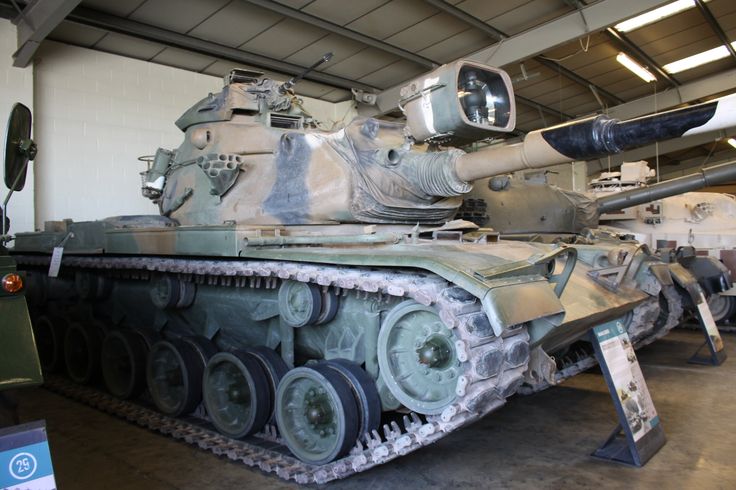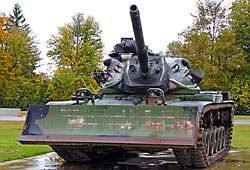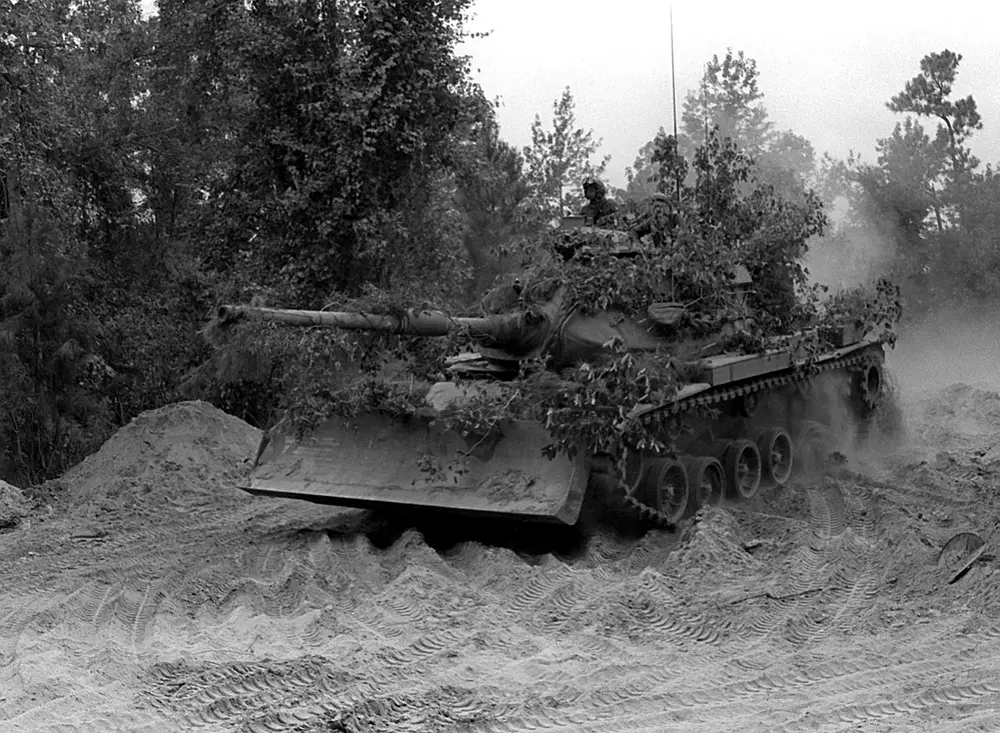Firstly, I would like to say that this is a work in progress and will be updated. It is in the correct section, as once it is completed, I will repost it under suggestions, so that it becomes a form of backup for that.

History of The M60 SERIES AND M60A1 (RISE) CEV
The M60 was developed in the late 1950s as a response to the perceived threat of new Soviet tanks such as the T-54/55, which outclassed the existing M48 Patton. It entered U.S. service in 1960 and was designed to offer improved firepower, armor protection, and range. Initially, it retained a similar turret shape to the M48 but was armed with a more powerful 105mm M68 rifled gun.
Throughout its service life, the M60 underwent several key upgrades. The M60A1, introduced in 1962, was the most numerous variant, featuring a redesigned “long-nose” turret with improved armor protection and more internal space. It also saw upgrades to its fire control system and reliability. Many M60A1s later received further enhancements like the Reliability Improvement Selected Equipment (RISE) package and Explosive Reactive Armor (ERA) for increased survivability. A more radical departure was the M60A2 “Starship,” produced in limited numbers from 1973 to 1975, which mounted a 152mm gun/launcher capable of firing both conventional rounds and the MGM-51 Shillelagh anti-tank missile. However, its complex systems proved overly problematic, and it saw very limited service. The M60A3, introduced in 1978, was the last of the M60 series. It incorporated significant technological advancements, including a laser rangefinder, a ballistic computer, thermal imaging sights (TTS - Tank Thermal Sight), and a turret stabilization system. These upgrades vastly improved its target acquisition.
Combat History: While never seeing direct combat in Vietnam (though M60-based variants like the M88 recovery vehicle and M728 Combat Engineer Vehicle did), the M60 series gained significant combat experience with allied nations, notably Israel, in the 1973 Yom Kippur War and 1982 Lebanon War. For the U.S. military, the M60’s combat debut was during Operation Urgent Fury in Grenada in 1983. Its most significant combat role for U.S. forces came during the 1991 Gulf War (Operation Desert Storm). Although the M1 Abrams was the primary U.S. tank in this conflict, the U.S. Marine Corps extensively utilized their M60A1 RISE (PASSIVE) (many equipped with ERA and dozer blades) against Iraqi forces, achieving notable success against Soviet-built T-72 tanks.
Retirement: After Desert Storm, the M60 series was gradually phased out of front-line service with the U.S. Army as the M1 Abrams became fully established. The U.S. Marine Corps retired its remaining M60s shortly after the Gulf War. By 1997, the M60 was officially retired from all U.S. service, including National Guard units, marking the end of its nearly four-decade run as a cornerstone of American armored power. Despite its retirement from U.S. service, the M60 continues to be operated and upgraded by numerous countries worldwide.
While the M60A1 RISE (CEV) never saw combat, it did see use in multiple training exercises in Europe from 1975 to 1978 (in 1978, it was upgraded to the RISE passive).
The Rise upgrade was intended to improve the service life and reliability of the M60A1 by introducing new/ upgraded equipment. A majority of those improvements centered around the tank’s powerplant, including a new fuel system and a top-loading air cleaner. However, this variant was only in existence for three years due to the introduction of the passive night vision system, which was installed on most, if not all, RISE Standards/CEVs. Because of this, the RISE Standard does not have a well-documented history, except for a few images and government documents that briefly mention/ acknowledge its existence.
M60A1 RISE (CEV) specific Info
The M60A1 RISE (CEV), referred to from this point forward as the M60A1 CEV for brevity reasons, was a standard M60A1 AOS that underwent the RISE (Reliability Improved Selected Equipment) upgrade and was also given access to additional equipment, including an AN/VSS-1 Xenon Visible/IR spotlight (this was standard for most M60’s at the time as a reqired part of the active night vision system, and the M9 bulldozer blade (both are also seen on the M728 CEV, while the AN/VSS-1 is seen on the M60A2); it retained its standard armarment and was created with the intention of being able to support other standard M60A1’s in its unit by clearing paths through obstacles such as rubble and embankments, as well as creating defensive hull down positions for itself and its standard counterparts (there was generally only one CEV in every group of m60’s). However, the M60A1’s stabilization system had to be reworked to function with the M9 installed, and the M9 was only compatible with M60s that used a top-loading air cleaner (All M60A1 RISE variants used this system).
The xenon IR/Visible spotlight was used during nighttime operations to “illuminate” an area (in-game, only its IR mode would be available) and would enable it to illuminate the area that the turret was aimed, this is waht allowed the Active night vision system to function properly as a passive NVD system was not introduced until the creastion of the RISE (PASSIVE) hence the passive designation.
While this may sound like it offers only benefits, they do come with tradeoffs. The M9 dozer, when equipped, would increase the tank’s weight by approximately 4.45 tons and would subsequently decrease its performance. However, the Xenon AN/VSS-1 offers a different kind of downside, when it’s in use any vehicle with night vision can and will see you due to the “illumination” that it gives off, which increases your visibility to other vehicles with NVD, but can also be used to your advantage, as it can be used to blind your enemies to obscure your tank. This would increase the amount of time it takes for your enemy to identify you and locate your weak spots. The AN/VSS-1 weighed over 200 pounds and was mounted to the turret mantlet on three truck hitch-like pieces. and could be stowed away on the rear of the turret when not in use.
STATS: (standard M60A1 RISE)
data
General Data:
Crew: 4 (Commander, Gunner, Loader, Driver)
Combat Weight: Approximately 52 tons (47,000 kg) M9 dozer blade would increase its weight by 4.45 Tons
Overall Length (Gun Forward): 30 ft 6.5 in (9.309 meters)
Overall Width: 11 ft 11 in (3.631 meters)
Overall Height (to top of cupola): 10 ft 9 in (3.27 meters)
Ground Clearance: 1 ft 6.2 in (0.463 meters)
Engine & Performance:
Engine Type: Continental AVDS-1790-2C, V12, Air-cooled, Supercharged Diesel
Gross Horsepower: 750 hp at 2400 rpm
Transmission: Cross-drive CD-850-6A, 2 forward, 1 reverse ranges
Maximum Road Speed: 30 mph (48 km/h)
Maximum Range: 300 miles (approximately 500 km)
Maximum Vertical Obstacle: 36 inches (0.91 meters)
Maximum Trench Crossing: 102 inches (2.59 meters)
Maximum Gradient: 60%
Armament:
Primary Weapon: 105mm M68 Rifled Gun
Ammunition Carried: 63 rounds
Elevation: -9 to +20 degrees (depending on variant and equipment installed)
Traverse: 360 degrees
Coaxial Weapon: 7.62mm M73 Machine Gun
Commander’s Weapon: .50 Cal M85 Machine Gun
Armor:
Hull: Cast, homogeneous steel (early models), later cast and welded
Front: 3.67 inches (93mm) at 65 degrees (M60); 4.29 inches (109 mm) at 65 degrees (M60A1/A3)
Turret: Cast, homogeneous steel
Front: Up to 10.9 inches (276mm)
Gun Shield: 5.0 to 6.36 inches (127 to 162 mm)
Fire Control & Vision:
-Gunner’s Vision: M16 Fire Control System with a coincidence rangefinder (NVD)
-Commander’s Vision: M28/M32 Periscopes (M60/M60A1/M60A1 RISE+) (NVD) (commanders sight)
-Driver’s Vision: M24 Periscope (NVD)
Ammo:
M728: APDS
M456: HEATFS
M393A2: HESH
M416: SMOKE
(source R.P. Hunnicut: Patton, A History of the American Main Battle Tank)
PLACEMENT:
I believe that the CEV would fit fairly well at the same BR as the standard M60A1: 8.3 (GRB) however, I think that it would be beneficial and reasonable for it to be foldered with the M60A1 (AOS) as well, since its is a derivative of the current M60A1 and since it gains little direct advantages over its standard counterpart in terms of armor, and weponry. (Its advantages would be in its usage rather than its stats)
more images
Please note that the M9 bulldozer was often not used during operations, and each unit generally had only a single M60A1 CEV. However, it was used on the Rise and TTS M60s during Desert Storm and is fully compatible with most M60 models, with the exception of the original M60.





- Yes
- No
sources:
R.P. Hunnicut: Patton, A History of the American Main Battle Tank
FM 17-12 (1968, Tank Gunnery), chapter 6 and chapter 9
FM 17-12 (1978, Tank gunnery) 4-7, 4-8, 13-12
M60 Patton in Action - Armor Number 23 (1986) pages: 15, 16, 17, 18
(M60 family Update system assessment, Unclassified unlimited distribution) (see below)
TM-9-2590-209-14-P (M9 dozer blade TM number): TM-9-2590-209-14-P Bulldozer Earth Moving: Tank Mounting M9 (2590-00-708-3563) Manual


